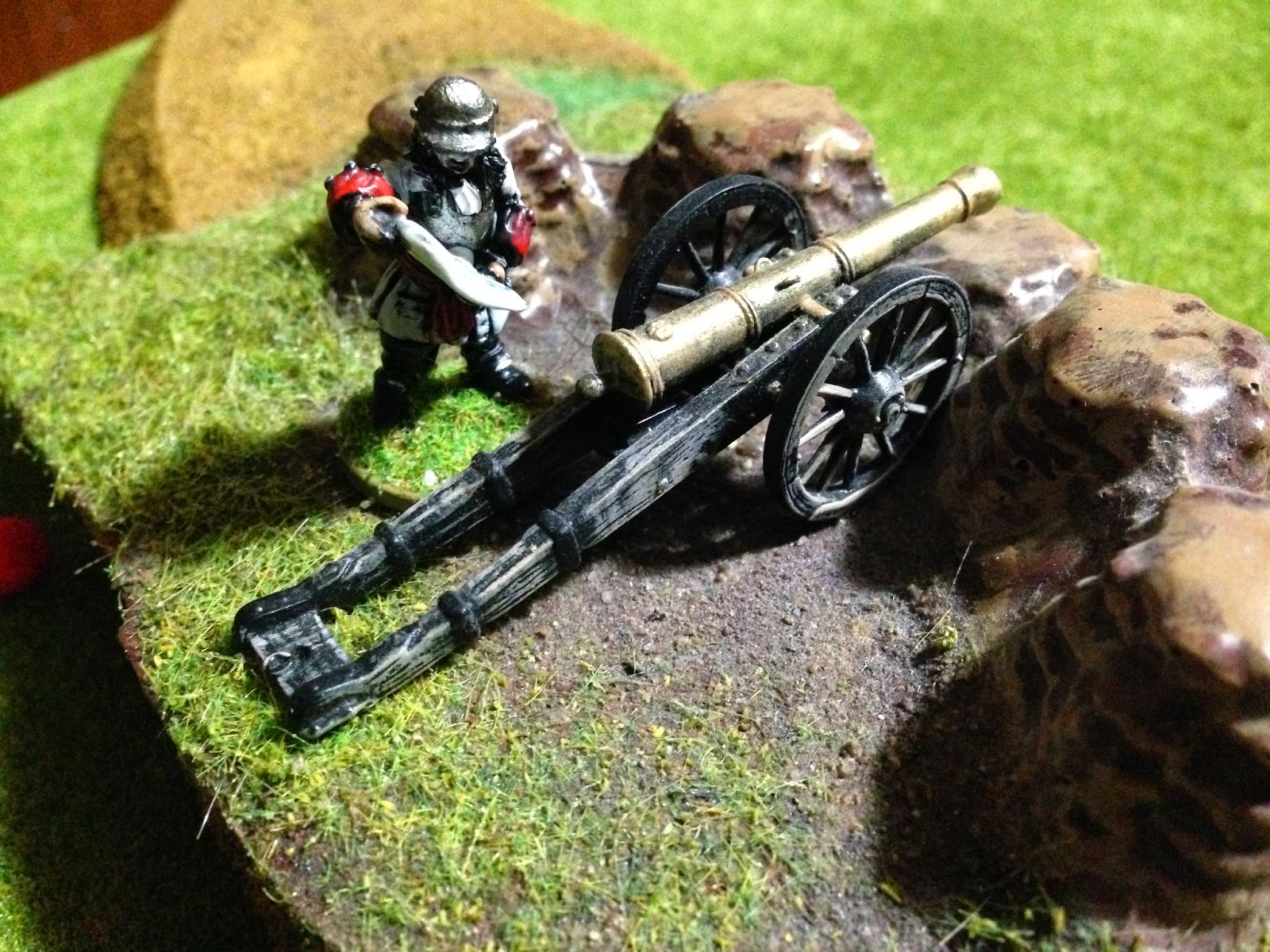Like most wargamers, I cut my teeth on the table of modifers,
the roll of the d6 with variable plusses and minuses and the complicated
artillery rules. This has been a mainstay of wargaming since the heyday of the
70s and 80s.
I’m talking about Firefly, Command Decision and even Rapid Fire here and I suspect (from what I’ve seen) that the latest version of ‘Fires
of Conflict’ and its ilk, uses similar systems in a decidedly ‘non’ unique way.
So that said, I was surprised about eight years ago (and have recently been 're'surprised when I re-discovered them) with a
completely free set which I found on the internet. Now, there appears to be a
bit of a chequered history here, so bear with…
The rules are called ‘Lightning War’ by David St.Clair and
Andrew O’Gorman. These later became ‘Lightning War II’ with added orders and objective rules. A later version, with
VERY similar systems by 'David Childs Dennis' also appeared under the ‘Lightning
War’ title, though these were both modern and WWII versions of rules at a much
lower and ‘close in’ scale (covering areas such as Russian conflicts and more
recently world war II).
So the game that follows is very much using the original
rules – with minimal fuss and bother – dating from the 2002 pdf. (I can email
these to anyone who wants them, as the original rules seem to have disappeared from the internet, and been replaced by the reduced scale versions).
Here are some examples of the beautiful design:
- Game turn sequence revolves around initiative (nothing strange there) though you can grant it to the opposing player if you want to force him to move (or miss a move).
- Units that don’t move (on both sides) fire before units that do – granting a ‘reserve fire’ rule without the messiness of stopping units mid move.
- There are 3 movement lengths and ranges – 6”, 12” and 24”. The Grognards among you will be gasping with shock, but this doesn’t half speed things up.
- Gun effectiveness vs armour governs the number of dice fired, with ‘6’s predominat. That’s it. No modifers or mess.
- Artillery at the company scale is assumed to range across the table, hence no ranging, with the ‘to hit’ roll built into the number of d6 rolled. Get caught in the open by the side that has initiative, and your units are badly mauled.
- Armour caught in the open without infantry support, is automatically removed if close assaulted by infantry, if they survive first fire. You're forced to support your armour without having to write complex rules around it.
The second version of the rules introduces objectives and
orders, but again in a seamless way. We’ll try this next time.
Here’s the kicker though. This game proceeded in exactly the
same manner as a more complex game, with better appreciation of the tactics
required and more careful use of forces available in half the time. Take that hardback rules!!!
Russian armour makes an attack on the right as the remnants strike deep on the left flank.
Armour in action, taking out one panther at some cost, as the JS2 lurks.
German defences take a battering on the left and right as Soviet armour starts to break through.
Some sterling efforts (with lucky sixes ;) ) in defence and the German re-establish the line in the town with one anti tank gun and a panther.
The 75mm ATG holds the line, reducing the last of the Soviet armour, so much so that German infantry (which has been spotting for artillery) can be released to press home a counterattack...
All in all a lovely and fast set of rules that pull no
punches, get a more readily achievable result and hone tactical use of troops
rather than book flipping. I love it.
The big benefit here is that the same mechanisms can be used
for
- Moderns and 1980s Cold War
- Other scales. Currently, 3-4 infanty units represent a company, but smaller scale squad or platoon level, rather than company, are readily achievable by adjusting ranges and clarifying command issues. Even breaking bases down to fireteam level offers ultra modern opportunities.
- Upscaling to operational level for ‘Market Garden’ or Bulge also makes sense, and retains a playable ruleset where logistical concerns are key.
More next time…and Happy New Year to all.



















































